Contemporary Church History Quarterly
Volume 21, Number 2 (June 2015)
Review of Rainer Stuhlmann, Zwischen den Stühlen: Alltagsnotizen eines Christen in Israel und Palästina
(Neukirchen-Vluyn: Neukirchener Verlag 2015), 155 Pp. ISBN 978-3-7615-6179-9.
By John S. Conway, University of British Columbia
After serving for thirty years as a pastor in the Rhineland Evangelical Church, Rainer Stuhlmann is spending part of his retirement as Director of Studies at Nes Ammim, a Christian centre in northern Israel. Nes Ammim was established fifty years ago by a Dutch Reformed couple, who were convinced of the need to have a visible sign in the newly-established state of Israel of the Christian desire for reconciliation and repentance for Christian complicity in the Holocaust. They believed the best way to do this would be to follow the example of the Zionist pioneers, and build a farming community in order to contribute both practically and spiritually to building new relationships. For many years they grew roses, which were picked, packed and sent every day to the Frankfurt flower market. Some years ago, when this venture no longer proved viable, they switched to running a guest hotel, staffed mainly by young Christian volunteers from Germany, Holland and Switzerland. Pastor Stuhlmann helped to organize their free time with programs enabling them to study more of present conditions in Israel and the Palestinian West Bank. This book is essentially a record of these encounters, written as a series of snapshots from the perspective of a keenly involved observer doing what he can to enhance the growth of communal friendship and harmonious relationships.
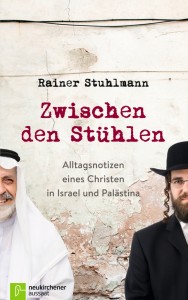 The Holy Land is of course full of holy history, also of holy geography. Stuhlmann sees his job as motivating his young guests from Europe to understand the dimensions of both these features and to encourage a courageous encounter with the many history-laced dilemmas which are met in so many corners of the “promised” land. He is clearly against the kind of religious tourism which brings Christian visitors to Israel, but seeks to isolate them in the first century without ever meeting with Israel’s present-day inhabitants or their troubles. He is equally opposed to the kind of narrow eschatological proclamation of certain Christian groups, especially some American evangelicals, or to the equally one-sided Jewish extremists who wage a continual battle against their Palestinian neighbours. He is grateful for the fact that he and his younger colleagues from Germany are now looked on as representatives of the “new Germany”, and that the horrors of the Holocaust, though loudly trumpeted in state-controlled media, are not attributed to the younger generation or to him personally. Likewise he is encouraged by the friendliness of the Palestinians who see these visitors from Europe as a hopeful sign that their cause is not being forgotten by the rest of the world. And he draws hope from the fact that there are many signs of confidence building between young Jews and Arabs, not least those established at Nes Ammim itself.
The Holy Land is of course full of holy history, also of holy geography. Stuhlmann sees his job as motivating his young guests from Europe to understand the dimensions of both these features and to encourage a courageous encounter with the many history-laced dilemmas which are met in so many corners of the “promised” land. He is clearly against the kind of religious tourism which brings Christian visitors to Israel, but seeks to isolate them in the first century without ever meeting with Israel’s present-day inhabitants or their troubles. He is equally opposed to the kind of narrow eschatological proclamation of certain Christian groups, especially some American evangelicals, or to the equally one-sided Jewish extremists who wage a continual battle against their Palestinian neighbours. He is grateful for the fact that he and his younger colleagues from Germany are now looked on as representatives of the “new Germany”, and that the horrors of the Holocaust, though loudly trumpeted in state-controlled media, are not attributed to the younger generation or to him personally. Likewise he is encouraged by the friendliness of the Palestinians who see these visitors from Europe as a hopeful sign that their cause is not being forgotten by the rest of the world. And he draws hope from the fact that there are many signs of confidence building between young Jews and Arabs, not least those established at Nes Ammim itself.
Anyone visiting Israel/Palestine cannot fail to be impressed, even intimidated, by the weight of history which pervades every corner of this Holy Land. Even more forceful is the evidence on all sides of the many centuries of nation building and the equally obvious evidence of these attempts’ downfall. Stuhlmann would like to be optimistic, but is obliged to recognize that the forces of national bigotry and self-preservation have a long start. Every time he takes parties of students to Jerusalem, they are confronted with the most recent evidence of the endemic hostility between Israelis and Palestinians, namely the so-called Separation Wall around the city, which was constructed a few years ago. This was built as a barrier against terrorist attacks but has since been extended to expropriate large sections of Palestinian land holdings and vineyards, which he sees as a most brutal robbery by the Israeli state. This Wall in fact forbids the inhabitants from the Palestinian side crossing into Jerusalem without control, and hence denies the opportunity to have social contact or conversations. This is exactly the contrary to Nes Ammin, where such relationships are deliberately encouraged. It all points to the fact that, in the ancient capital, where three religions have existed in rivalry for centuries, and every stone witnesses to unresolved conflicts, the atmosphere is much sharper and confrontational than in northern Galilee. But given the escalation of conflict in all the surrounding countries, the hope that Israel will maintain a precarious peace and allow more positive steps for creative relationship between the inhabitants must be seen as an exercise in faith.
Stuhlmann is well aware that the history and the land of Israel have been and still are full of promises. Some are extravagant, some are unfulfillable, but all contain at least the hint of conflict. For this reason he avoids giving support to any of the limiting or exclusivist claims, whether political or religious, which are put forward to back one or other of the opposing sides. But to act as a reconciler, it is necessary to face both ways. Praying with the Psalmist for the peace of Jerusalem may seem a lost cause, but for Stuhlmann it is the only and most heroic stance to adopt in the midst of the present Middle Eastern strife. He places his hopes in what Nes Ammim has always done best, which is to bring together young people from both or all sides, and hope that their personal contacts will allay hostilities and rivalries, and that they will then go on to work for a resolution, or at least the alleviation of the tensions so visibly shared by the inhabitants of this Holy Land. He is sustained by the memory of how, in Germany, for forty years from 1950 onwards, two sides across the Iron Curtain adopted the same kind of biased and obstinate prejudices, and refused any kind of personal interaction across the well-defined and defended border. But then in 1989 all barriers were broken down, and humanity reigned again.
But in Israel, the separation has now lasted for fifty years. And a very deliberate policy of “Boycott, Disengagement and Sanctions” has only increased the suspicions and hostility on both sides. While there are those on the Jewish side who recognize that the occupation of the West Bank and oppression of the Palestinians is a catastrophe for their vision of Zionism, their advocacy of a two-nation solution has achieved nothing, and indeed still raises doubts about its viability. Equally there are those on the Palestinian side who refuse any contact with Jews. Stuhlmann naturally deplores such intransigence or the unwillingness to enter into dialogue even on a personal level. He realizes how difficult a task it remains to be supportive of the Palestinians without becoming an opponent of the Israelis. But he also deplores the widespread anti-Muslim and anti-Arab animosity stirred up in many western countries. Above all, he rejects the continued use of Israeli force to humiliate the Palestinian population under its control and to deny the destructive impact of their land confiscations or the malignant policies of establishing more settlements in the West Bank territories. He is convinced that such tactics seriously damage the Israeli cause, and he knows how offensive such policies are to the many Jewish friends he has found in Israel. The quest for both security for Israel and freedom for Palestine remains elusive and seemingly distressingly distant. The human toll is incalculable.
Zwischen den Stühlen is chiefly directed to his German audience in the hope of inducing a more balanced presentation of Middle Eastern politics. He cannot avoid the feeling that the widespread sympathy for the Palestinians will be interpreted, by some Jews at least, as a replay of the anti-Semitic attitudes shared by many Germans in previous decades. And the call in some western cities for a boycott of Israeli-produced goods evokes a reminder of the similar boycott organized by Josef Goebbels in April 1933. On the other hand, those Germans who loudly profess themselves to be Friends of Israel are seemingly willing to overlook the gross injustices inflicted on the Palestinian population in what they refer to as their “Nakba” or catastrophe. Similarly Stuhlmann regrets the enthusiastic support given to Israeli policies by the right-wing Evangelical Christian Zionists, eagerly awaiting the return of the Messiah. In his view, all such confrontational attitudes can only be harmful for the cause of peace. But at the same time, he greets enthusiastically all demonstrations against anti-Semitism, which must be resolutely opposed. Part of the problem is that both sides like to portray themselves as victims. Israelis harp on their status as survivors of the Holocaust of seventy years ago, and Palestinians see themselves as the victims of a hundred years of Zionist aggression. Both sides justify their defensive measures accordingly, which successfully prevent the growth of any climate of accommodation or agreement. Nevertheless Stuhlmann and his team of expatriate volunteers remain dedicated to their aim of reconciliation and mutual understanding.
Nes Ammim is situated near Acre. As a Christian centre, it stakes a claim to be a place of peaceful encounter for all faiths. But in 2013, it was itself the near-target of rockets fired from somewhere across the Lebanese border. Neither the aggressors nor the reasons for the attack were discernible. But the Israeli defence shield saved it from further damage. The paradox of being protected by the military power he has so readily criticized for its mistreatment of its Palestinian population did not escape Stuhlmann, and only heightened his awareness of the difficulties of trying to face both ways. Steering such a course in the often polarized climate in Germany makes Stuhlmann’s message of reconciliation and inter-faith dialogue even more hazardous, but equally even more necessary. He is in fact attempting to express solidarity with both Israelis and Palestinians without attempting to judge or condemn either side. This short book will undoubtedly assist those who look for the spirit of Nes Ammim to be vindicated in the troubled circumstances of the Holy Land today.

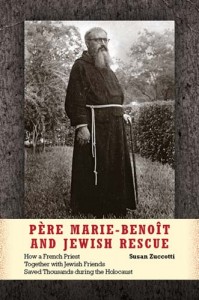 Susan Zuccotti is an established American scholar who has written a number of studies of the Holocaust, particularly dealing with events in France and Italy. Her latest contribution provides us with a well-researched biography of a little-known French Capuchin friar, Fr. Marie-Benoît, who was to play a significant role in rescuing Jews first in Marseilles in 1942 and then in Rome in 1943-4. Although he was to live for several decades after the war, his exploits were only recorded in French and remained largely unnoticed in remote French archives. Zuccotti was able to interview him in 1988 shortly before he died, but he was clearly a reticent witness, and it has taken her another twenty-five years to piece together his full story and to explore the determining factors which led him to play such an active role in assisting the Jewish refugees and victims of Nazi tyranny. The result is a portrait of a valiant and courageous priest whose witness in the cause of Christian-Jewish relations deserves to be better known to an English-speaking audience. So we can be grateful to Zuccotti for this helpful addition to the debate about how much (or how little) was done by various sectors of the Catholic Church to assist the Jewish victims of Nazism.
Susan Zuccotti is an established American scholar who has written a number of studies of the Holocaust, particularly dealing with events in France and Italy. Her latest contribution provides us with a well-researched biography of a little-known French Capuchin friar, Fr. Marie-Benoît, who was to play a significant role in rescuing Jews first in Marseilles in 1942 and then in Rome in 1943-4. Although he was to live for several decades after the war, his exploits were only recorded in French and remained largely unnoticed in remote French archives. Zuccotti was able to interview him in 1988 shortly before he died, but he was clearly a reticent witness, and it has taken her another twenty-five years to piece together his full story and to explore the determining factors which led him to play such an active role in assisting the Jewish refugees and victims of Nazi tyranny. The result is a portrait of a valiant and courageous priest whose witness in the cause of Christian-Jewish relations deserves to be better known to an English-speaking audience. So we can be grateful to Zuccotti for this helpful addition to the debate about how much (or how little) was done by various sectors of the Catholic Church to assist the Jewish victims of Nazism.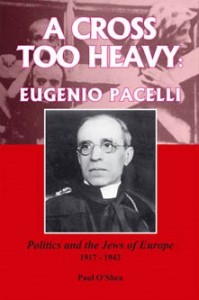 Paul O’Shea is one of the small group of Australian scholars who have become interested in the Catholic response to the traumatic events of the twentieth century, and particularly in the career of Pope Pius XII, as he sought to deal with the crises brought on by the totalitarian regimes of Europe. Like all of his predecessors, O’Shea suffers the handicap that many of the relevant documents have yet to be released from the Vatican archives, so despite his assiduous survey of Pius’ earlier life as a Vatican diplomat and later as Cardinal Secretary of State, we still have to acknowledge the tentative evaluation of all hypotheses about his war-time policies, and especially about his so-called “silence” concerning the victimization of the Jews of Europe.
Paul O’Shea is one of the small group of Australian scholars who have become interested in the Catholic response to the traumatic events of the twentieth century, and particularly in the career of Pope Pius XII, as he sought to deal with the crises brought on by the totalitarian regimes of Europe. Like all of his predecessors, O’Shea suffers the handicap that many of the relevant documents have yet to be released from the Vatican archives, so despite his assiduous survey of Pius’ earlier life as a Vatican diplomat and later as Cardinal Secretary of State, we still have to acknowledge the tentative evaluation of all hypotheses about his war-time policies, and especially about his so-called “silence” concerning the victimization of the Jews of Europe.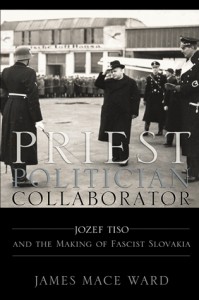 When Tiso was born in 1887, Slovakia was an outlying rural part of the Hungarian kingdom, an enclave of conservative Catholicism staunchly resisting the approach of modernity, particularly in the commercial field. His education and spiritual formation as a young priest were in the highly reactionary tradition espoused by Pope Pius X. But at the same time, he welcomed the emphasis on social action, and the need for Catholics to promote a vibrant corporate life, along with engagement in corporate Catholic politics. He became the editor of a local Slovak newspaper, stressing the Catholic values of solidarity and modesty and attacking both the free-thinking Socialists and the rapacious capitalists, especially the Jews.
When Tiso was born in 1887, Slovakia was an outlying rural part of the Hungarian kingdom, an enclave of conservative Catholicism staunchly resisting the approach of modernity, particularly in the commercial field. His education and spiritual formation as a young priest were in the highly reactionary tradition espoused by Pope Pius X. But at the same time, he welcomed the emphasis on social action, and the need for Catholics to promote a vibrant corporate life, along with engagement in corporate Catholic politics. He became the editor of a local Slovak newspaper, stressing the Catholic values of solidarity and modesty and attacking both the free-thinking Socialists and the rapacious capitalists, especially the Jews.
 Castagna’s excellently researched examination of the diplomatic archives of both the Vatican and the United States for this short period of twenty years provides a useful extension of comparative diplomatic history. He adds in various papal documents as well as notes the contributions of scholars of this subject in various languages. It is only unfortunate that the papers of Pope Pius XII are still unavailable, so that the next stage of the relationship between the Holy See and the United States, particularly where their policies diverged from 1940 onwards, remains to be told. (For these next events, see J. S. Conway, “Myron C. Taylor’s Mission to the Vatican 1940-1950,” Church History 44, no. 1 (March 1976): 1-15.) It can only be hoped that Castagna, who teaches at the University of Salerno, will be among those scholars invited to follow up this valuable study with a sequel, which could then demonstrate how, in the aftermath of 1945, this relationship actually became the bridge across the ocean of his title. The present short study must therefore be regarded as a prelude, describing the early stages of the thaw in Vatican-American relations which was only fulfilled when full diplomatic relations were finally established in 1984.
Castagna’s excellently researched examination of the diplomatic archives of both the Vatican and the United States for this short period of twenty years provides a useful extension of comparative diplomatic history. He adds in various papal documents as well as notes the contributions of scholars of this subject in various languages. It is only unfortunate that the papers of Pope Pius XII are still unavailable, so that the next stage of the relationship between the Holy See and the United States, particularly where their policies diverged from 1940 onwards, remains to be told. (For these next events, see J. S. Conway, “Myron C. Taylor’s Mission to the Vatican 1940-1950,” Church History 44, no. 1 (March 1976): 1-15.) It can only be hoped that Castagna, who teaches at the University of Salerno, will be among those scholars invited to follow up this valuable study with a sequel, which could then demonstrate how, in the aftermath of 1945, this relationship actually became the bridge across the ocean of his title. The present short study must therefore be regarded as a prelude, describing the early stages of the thaw in Vatican-American relations which was only fulfilled when full diplomatic relations were finally established in 1984.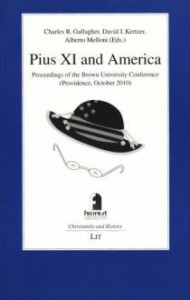 In their various explorations and elaboration of the papers from the Vatican archive, it is hardly surprising that these authors paint a favorable picture of the Vatican diplomats, especially of Cardinal Pacelli. Rob Ventresca, for example, in his survey of Pius XI, Eugenio Pacelli and the Italian Fascism, agrees with Castagna that Pacelli’s moderating influence was designed to head off any open breach with Mussolini’s aggressive tactics over Abyssinia, and to promote a negotiated settlement of the dispute. The price paid was to mute the Church’s public criticism of the morality of Mussolini’s imperial misadventures, which Ventresca suggests set a pattern to be repeated later with the even more serious breaches of the peace by Hitler. In her essay, Emma Fattorini takes a more critical attitude. She repeats the theme of her book Hitler, Mussolini and the Vatican, pointing to the profound differences of position and temperament between Pius XI and Pacelli. Fattorini clearly prefers the irrepressible intransigence of the elderly pontiff. Jacques Kornberg is even more critical, suggesting that both Pius XI and Pius XII failed to conduct themselves according to their own moral standards. The Vatican issued no outraged protests about the Nazis’ November 1938 Crystal Night pogrom because this was seen as not being a threat to Catholic interests. In Kornberg’s view, civic rights, or universal human rights, were not a matter for the papacy’s concern. On the other hand, Fr. Robert Trisco, in recounting the furor over the outspoken criticisms of Hitler and the Nazi regime made by Cardinal Mundelein of Chicago in May 1937, praises Pacelli for castigating privately the malicious invectives and disparagement perpetrated against the Holy See by the Nazi leadership. Trisco also describes the widespread support for Cardinal Mundelein given by different sections of American opinion, including President Roosevelt. Indeed Roosevelt took Mundelein’s advice about the difficult issue of how to restore diplomatic relations between the United States and the Vatican, but otherwise does not feature much in these essays. In all, there are few surprises, since many of the contributors have already had their say elsewhere. But, as Charles Gallacher remarks, there are still unanswered questions, such as why Pius XI sent Pacelli to the United States in 1936, or what topics were covered when Roosevelt and Pacelli met privately at Hyde Park.
In their various explorations and elaboration of the papers from the Vatican archive, it is hardly surprising that these authors paint a favorable picture of the Vatican diplomats, especially of Cardinal Pacelli. Rob Ventresca, for example, in his survey of Pius XI, Eugenio Pacelli and the Italian Fascism, agrees with Castagna that Pacelli’s moderating influence was designed to head off any open breach with Mussolini’s aggressive tactics over Abyssinia, and to promote a negotiated settlement of the dispute. The price paid was to mute the Church’s public criticism of the morality of Mussolini’s imperial misadventures, which Ventresca suggests set a pattern to be repeated later with the even more serious breaches of the peace by Hitler. In her essay, Emma Fattorini takes a more critical attitude. She repeats the theme of her book Hitler, Mussolini and the Vatican, pointing to the profound differences of position and temperament between Pius XI and Pacelli. Fattorini clearly prefers the irrepressible intransigence of the elderly pontiff. Jacques Kornberg is even more critical, suggesting that both Pius XI and Pius XII failed to conduct themselves according to their own moral standards. The Vatican issued no outraged protests about the Nazis’ November 1938 Crystal Night pogrom because this was seen as not being a threat to Catholic interests. In Kornberg’s view, civic rights, or universal human rights, were not a matter for the papacy’s concern. On the other hand, Fr. Robert Trisco, in recounting the furor over the outspoken criticisms of Hitler and the Nazi regime made by Cardinal Mundelein of Chicago in May 1937, praises Pacelli for castigating privately the malicious invectives and disparagement perpetrated against the Holy See by the Nazi leadership. Trisco also describes the widespread support for Cardinal Mundelein given by different sections of American opinion, including President Roosevelt. Indeed Roosevelt took Mundelein’s advice about the difficult issue of how to restore diplomatic relations between the United States and the Vatican, but otherwise does not feature much in these essays. In all, there are few surprises, since many of the contributors have already had their say elsewhere. But, as Charles Gallacher remarks, there are still unanswered questions, such as why Pius XI sent Pacelli to the United States in 1936, or what topics were covered when Roosevelt and Pacelli met privately at Hyde Park.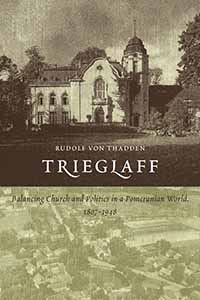
 The patriarch, Adolf von Thadden, inherited the estate after Napoleon’s defeat and was greatly influenced by the wave of pietistic fervor which swept across Germany in those years. He turned Trieglaff into a center for revivalist meetings for the whole of Pomerania. This was a strongly conservative faith which maintained an uncritical biblical fundamentalism and often expressed itself in sectarian excesses. But it sought to uphold the witness of the individual believer and to prevent the incursion of rationalist or secular ideas. In particular, the Trieglaffers resented the top-heavy controls exercised over the church by state officials, who obeyed the commands of the monarch King Frederick William III in uniting the Lutheran and Reformed adherents into one United Prussian Church. The result was a clash in the village and the secession of a group true to their former loyalties and calling themselves Old Lutherans. They even built their own church at the other end of the village which still survives today.
The patriarch, Adolf von Thadden, inherited the estate after Napoleon’s defeat and was greatly influenced by the wave of pietistic fervor which swept across Germany in those years. He turned Trieglaff into a center for revivalist meetings for the whole of Pomerania. This was a strongly conservative faith which maintained an uncritical biblical fundamentalism and often expressed itself in sectarian excesses. But it sought to uphold the witness of the individual believer and to prevent the incursion of rationalist or secular ideas. In particular, the Trieglaffers resented the top-heavy controls exercised over the church by state officials, who obeyed the commands of the monarch King Frederick William III in uniting the Lutheran and Reformed adherents into one United Prussian Church. The result was a clash in the village and the secession of a group true to their former loyalties and calling themselves Old Lutherans. They even built their own church at the other end of the village which still survives today.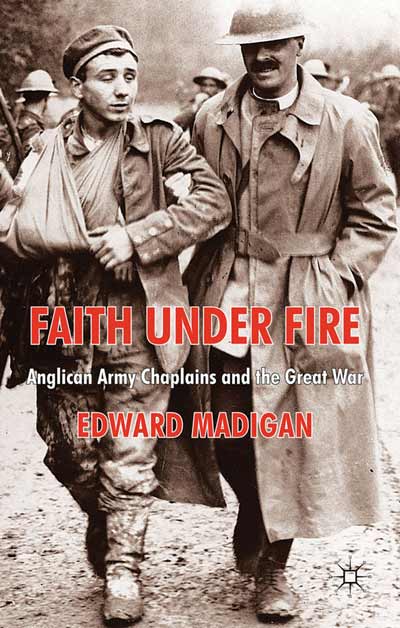
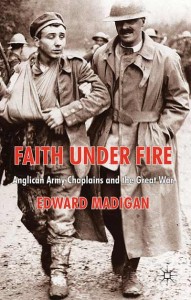 Edward Madigan’s valuable study begins with a comprehensive survey of the literature about chaplains and their war-time contributions, some written by chaplains themselves, such a Ernest Raymond’s Tell England, or the far more influential novel by Robert Graves, Goodbye to all That. Many of these books presented a largely negative picture of the war records of these chaplains, finding that they were generally not respected by either officers or men, being considered inadequate to the tasks they faced.
Edward Madigan’s valuable study begins with a comprehensive survey of the literature about chaplains and their war-time contributions, some written by chaplains themselves, such a Ernest Raymond’s Tell England, or the far more influential novel by Robert Graves, Goodbye to all That. Many of these books presented a largely negative picture of the war records of these chaplains, finding that they were generally not respected by either officers or men, being considered inadequate to the tasks they faced.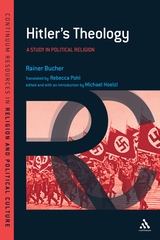 The bulk of the book, which is written in a somewhat convoluted Germanic style, but competently translated into English by Rebecca Pohl, is based on a thorough examination of all of Hitler’s surviving speeches and writings. Bucher’s main contention is that Hitler’s worldview was far more than just an ideology adopted for tactical reasons in order to gain political support. Rather, in Bucher’s view, Hitler’s ideas constituted a theology, even though it was an intellectually crude and merciless construct, and based on an abominable racism. Bucher is well aware that speaking of Hitler’s theology is provocative because it seems to associate what Christians believe with one of the worst criminals of our era. So he is careful to ensure that he cannot be accused of trying to undertake any kind of vindication. His task is therefore one of explanation rather than condemnation, let alone approbation. In this he succeeds with consummate skill.
The bulk of the book, which is written in a somewhat convoluted Germanic style, but competently translated into English by Rebecca Pohl, is based on a thorough examination of all of Hitler’s surviving speeches and writings. Bucher’s main contention is that Hitler’s worldview was far more than just an ideology adopted for tactical reasons in order to gain political support. Rather, in Bucher’s view, Hitler’s ideas constituted a theology, even though it was an intellectually crude and merciless construct, and based on an abominable racism. Bucher is well aware that speaking of Hitler’s theology is provocative because it seems to associate what Christians believe with one of the worst criminals of our era. So he is careful to ensure that he cannot be accused of trying to undertake any kind of vindication. His task is therefore one of explanation rather than condemnation, let alone approbation. In this he succeeds with consummate skill.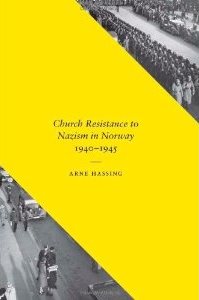 He begins with an account of the Norwegian reception of the German Church Struggle in the pre-1940 period, since he rightly notes that both nations had Lutheranism as their official Protestant state religion and as their traditional focus of loyalty. The challenge of Nazi ideology and its attempt to corrupt Luther’s teachings was therefore immediately recognized. Hassing pays tribute to the skilful manner in which Bishop Berggrav differentiated the Norwegian understanding of Luther from that held by many theologians in Germany. He also notes the skill with which the Norwegian church leaders were able to forge an alliance amongst themselves and resolve long-held theological antagonisms, in order to oppose the invaders and their supporters in Norway.
He begins with an account of the Norwegian reception of the German Church Struggle in the pre-1940 period, since he rightly notes that both nations had Lutheranism as their official Protestant state religion and as their traditional focus of loyalty. The challenge of Nazi ideology and its attempt to corrupt Luther’s teachings was therefore immediately recognized. Hassing pays tribute to the skilful manner in which Bishop Berggrav differentiated the Norwegian understanding of Luther from that held by many theologians in Germany. He also notes the skill with which the Norwegian church leaders were able to forge an alliance amongst themselves and resolve long-held theological antagonisms, in order to oppose the invaders and their supporters in Norway.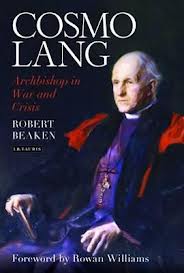 Lang was born in Scotland, the son of a distinguished Presbyterian minister. When he came to study in Oxford, he switched allegiance to a moderate high Anglicanism and opted to be ordained in the Church of England. His gifts were obvious and he quickly gained preferment. In fact, in 1890, at the age of 36, he became a suffragan or assistant bishop, and at the age of 44 was selected to be Archbishop of York, the second highest appointment in the English hierarchy. He spent twenty years there, before being moved to Canterbury in 1928. In Beaken’s view, it was hardly his fault that he was appointed to York too early and to Canterbury too late in life. He was a loner and a workaholic, and a bachelor who had difficulty in relating to others even of his own class and complexion. As a result, he never established any personal associations and had no following to uphold his legacy. This biography will, however, serve to record his achievements and gives a sympathetic analysis of Lang’s actions during the difficult and traumatic years of the 1930s.
Lang was born in Scotland, the son of a distinguished Presbyterian minister. When he came to study in Oxford, he switched allegiance to a moderate high Anglicanism and opted to be ordained in the Church of England. His gifts were obvious and he quickly gained preferment. In fact, in 1890, at the age of 36, he became a suffragan or assistant bishop, and at the age of 44 was selected to be Archbishop of York, the second highest appointment in the English hierarchy. He spent twenty years there, before being moved to Canterbury in 1928. In Beaken’s view, it was hardly his fault that he was appointed to York too early and to Canterbury too late in life. He was a loner and a workaholic, and a bachelor who had difficulty in relating to others even of his own class and complexion. As a result, he never established any personal associations and had no following to uphold his legacy. This biography will, however, serve to record his achievements and gives a sympathetic analysis of Lang’s actions during the difficult and traumatic years of the 1930s.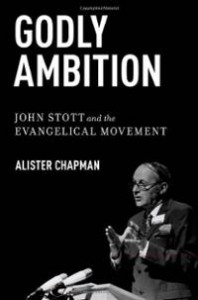 John Stott was born in 1921 in a well-to-do professional family and, as was the custom, went to one of England’s most prestigious private (i.e. “public”) schools, Rugby, where his talents led to his appointment as Head Boy. At the age of seventeen, he had a classic evangelical conversion experience and invited Jesus Christ into his life. This was largely due to the influence of an itinerant Anglican clergyman named Eric Nash, whose mission it was to attract young public school leaders and lead them to a life of Christian witness and service . Nash remained Stott’s mentor for many years and undoubtedly encouraged him to seek ordination as a Church of England priest. This decision was to be a great disappointment to Stott’s family, as was (even more so) his resolve not to be conscripted to do military service at the very moment when the Second World War broke out in 1939. Stott took advantage of the loop-hole which allowed students in training for the ministry to be exempt from military service. He was thus one of the few young men taking his war-time undergraduate degree at Trinity College, Cambridge, after which he moved on to the nearby theological college, Ridley Hall, which resolutely maintained the evangelical tradition of those martyrs burnt at the stake by Queen Mary four centuries earlier.
John Stott was born in 1921 in a well-to-do professional family and, as was the custom, went to one of England’s most prestigious private (i.e. “public”) schools, Rugby, where his talents led to his appointment as Head Boy. At the age of seventeen, he had a classic evangelical conversion experience and invited Jesus Christ into his life. This was largely due to the influence of an itinerant Anglican clergyman named Eric Nash, whose mission it was to attract young public school leaders and lead them to a life of Christian witness and service . Nash remained Stott’s mentor for many years and undoubtedly encouraged him to seek ordination as a Church of England priest. This decision was to be a great disappointment to Stott’s family, as was (even more so) his resolve not to be conscripted to do military service at the very moment when the Second World War broke out in 1939. Stott took advantage of the loop-hole which allowed students in training for the ministry to be exempt from military service. He was thus one of the few young men taking his war-time undergraduate degree at Trinity College, Cambridge, after which he moved on to the nearby theological college, Ridley Hall, which resolutely maintained the evangelical tradition of those martyrs burnt at the stake by Queen Mary four centuries earlier. Briefly the story is as follows. Pope Pius XI (Achille Ratti) who reigned from 1922 to 1939 was increasingly alarmed and dismayed by the rise of Nazism and its flagrant and sustained attacks against both the Catholic Church and the Jews. Already in 1937, Pope Pius, after consulting the German bishops, had issued a vigorous protest in the Encyclical “Mit Brennennder Sorge”. But the results were disappointing. Hitler merely stepped up his persecution of the church, and encouraged his associates to be even more virulent in their campaigning against the Jews. But by 1938 the Pope had determined to protest again, specifically against the violent extremism in the Nazis’ racial and anti-Semitic ideology. By chance the Pope had come across a book written by LaFarge entitled Interracial Justice, which described the plight of blacks in the United States, and pleaded for the church to take a lead in combatting racism in that country. The parallels between racism in America and the dangers of anti-Semitism in Europe were easy to see.
Briefly the story is as follows. Pope Pius XI (Achille Ratti) who reigned from 1922 to 1939 was increasingly alarmed and dismayed by the rise of Nazism and its flagrant and sustained attacks against both the Catholic Church and the Jews. Already in 1937, Pope Pius, after consulting the German bishops, had issued a vigorous protest in the Encyclical “Mit Brennennder Sorge”. But the results were disappointing. Hitler merely stepped up his persecution of the church, and encouraged his associates to be even more virulent in their campaigning against the Jews. But by 1938 the Pope had determined to protest again, specifically against the violent extremism in the Nazis’ racial and anti-Semitic ideology. By chance the Pope had come across a book written by LaFarge entitled Interracial Justice, which described the plight of blacks in the United States, and pleaded for the church to take a lead in combatting racism in that country. The parallels between racism in America and the dangers of anti-Semitism in Europe were easy to see.
 A new biography has recently been published in Germany of Nathan Söderblom, the most prominent Protestant church leader in the decade of the 1920s. The author, Dietz Lange, is the emeritus professor of Systematic Theology in Göttingen, and in this laudatory but leisurely account of Söderblom’s career, the emphasis is placed on the evolution of Söderblom’s intellectual ideas and his relations with other scholars and theologians of his time. Lange supplements but does not supplant the standard biography in English, written nearly half a century ago by Bengt Sundkler, which concentrated on Söderblom’s main claims to fame, his championships of the peace endeavours during the first world war, and his leadership of the ecumenical movement in the aftermath.
A new biography has recently been published in Germany of Nathan Söderblom, the most prominent Protestant church leader in the decade of the 1920s. The author, Dietz Lange, is the emeritus professor of Systematic Theology in Göttingen, and in this laudatory but leisurely account of Söderblom’s career, the emphasis is placed on the evolution of Söderblom’s intellectual ideas and his relations with other scholars and theologians of his time. Lange supplements but does not supplant the standard biography in English, written nearly half a century ago by Bengt Sundkler, which concentrated on Söderblom’s main claims to fame, his championships of the peace endeavours during the first world war, and his leadership of the ecumenical movement in the aftermath. Writing with considerable journalistic flair, but of course without any Vatican official documentation, Gawthrop presents us with a highly critical account of Ratzinger’s career. To be sure, he allows that, during the Council’s sessions, Ratzinger, then a theological advisor to one of the German Cardinals, supported many of the reformist ideas. But only a few years later, while he was teaching at Germany’s most prestigious university of Tübingen, he was deeply offended by the virulent student radicalism embracing a “Marxist messianism”. As a result he turned away from his colleagues such as Hans Kung and other progressive theologians. Shortly afterwards he retreated to the rural backwater of Regensburg in his native Bavaria, and began to prepare his theological counter-offensive to Vatican II.
Writing with considerable journalistic flair, but of course without any Vatican official documentation, Gawthrop presents us with a highly critical account of Ratzinger’s career. To be sure, he allows that, during the Council’s sessions, Ratzinger, then a theological advisor to one of the German Cardinals, supported many of the reformist ideas. But only a few years later, while he was teaching at Germany’s most prestigious university of Tübingen, he was deeply offended by the virulent student radicalism embracing a “Marxist messianism”. As a result he turned away from his colleagues such as Hans Kung and other progressive theologians. Shortly afterwards he retreated to the rural backwater of Regensburg in his native Bavaria, and began to prepare his theological counter-offensive to Vatican II. Monica was a cultured English gentlewoman who had volunteered in 1931 to come out to western Canada to help build up the Anglican Church amongst the isolated and often impoverished homesteaders of the Peace Dictrict. Luckily, at the end of 1938, Monica was taking a home leave, so she was able to meet the two German boys when they arrived in England on one of the “Kindertransporte” which rescued several thousand children in the few short months before the outbreak of war.
Monica was a cultured English gentlewoman who had volunteered in 1931 to come out to western Canada to help build up the Anglican Church amongst the isolated and often impoverished homesteaders of the Peace Dictrict. Luckily, at the end of 1938, Monica was taking a home leave, so she was able to meet the two German boys when they arrived in England on one of the “Kindertransporte” which rescued several thousand children in the few short months before the outbreak of war.